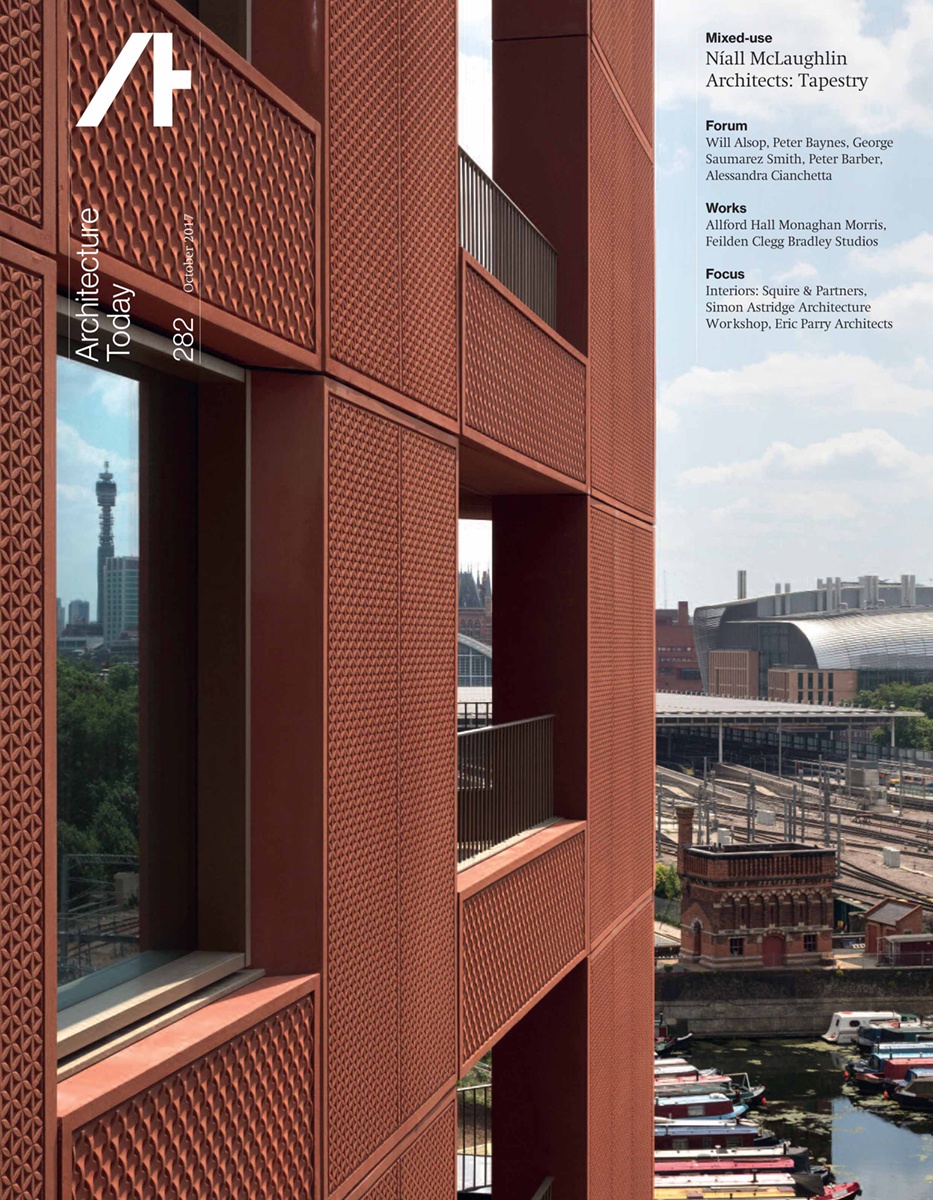Urban Fabric - Architecture Today
November 2017
Text David Kohn
Images Nick Kane
Tucked away in the north-west corner of London’ s King’s Cross redevelopment, hugging the mainline tracks departing St Pancras station, Tapestry is one of the district’s largest new arrivals. Designed by Niall McLaughlin Architects, the building houses 129 flats over 14 floors, but also a multi-storey car park serving the entire 67-acre site, an energy centre and a sports hall. Clad in terracotta-coloured concrete decorated with Egyptian motifs and 1960s op art patterns, and with a village green surrounded by houses on its roof, the project defies easy categorisation.
Where to begin? Niall McLaughlin (born in 1962) set up his practice in 1990 and built his early reputation through several finely crafted houses. When invited by developer Argent to compete for the Tl site at King’s Cross in 2007, the largest project in the office was a £1m Alzheimer’s Respite Centre in Dublin. In the intervening decade NMLA has become one of the most prolific practices working for Oxbridge colleges, and has delivered critically acclaimed projects such as Bishop Edward King Chapel and housing for Peabody. Tapestry still dwarfs them all, however, and gives a unique insight into the development of the practice.
Argent’s masterplan (developed by Allies and Morrison and Porphyrios Associates) dictated that the T1 plot should deal with some of the less commodious parts of the development. Given the bulk of the car park and plant, an elevated mid-city block approach would be destined to fail, and one can imagine at least a couple of alternative design approaches to this problem. First, to celebrate the car park and energy centre in a profusion of ramps and funnels – a beached cruise liner in the manner of the Metabolists, such as Yoji Watanabe’s 1972 New Sky Building. Alternatively, to treat these uses as a found condition to build up on, in the manner of Bjarke Ingels’ Copenhagen building The Mountain, completed in 2008.
Perhaps what can also be observed is the redeployment of different strategies within McLaughlin’s earlier work at this greater scale, which hints at future possibilities. The timber house in Wandsworth, the Fishing Hut in Hampshire or the Carmelite Prayer Room in Dublin, for example, share several concerns. First, the precise use of technology to create enclosures. Second, the clear distinction of parts with in a hierarchy that lends the structures a high level of legibility. Third, the deployment of the first two in creating layers of spaces that can mediate between the public and private spheres. The Tapestry building demonstrates the scalability of the practice’ s approach, and how the same level of control exercised over intimate domestic spaces can be brought to bear on a programme of such Architecture Today Article complexity, and on a structure of such mountainous proportions. If this is how McLaughlin handles T1 at Kings Cross, think what he might do with a Heathrow T6.
